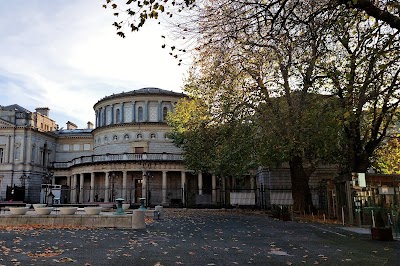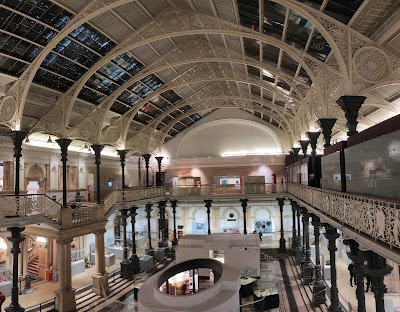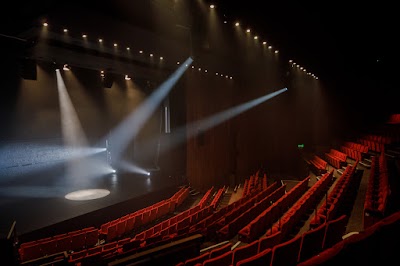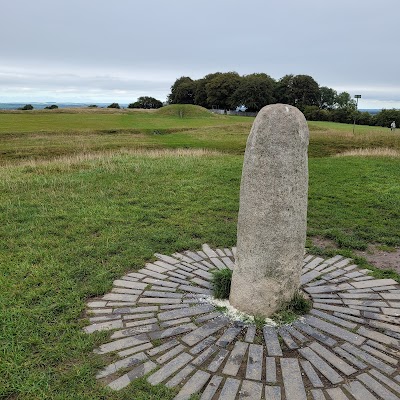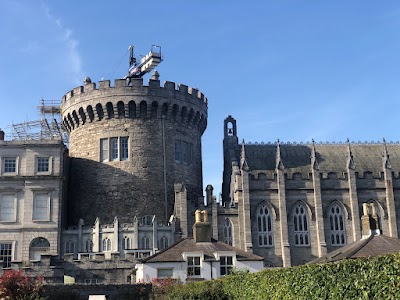National Museum of Ireland - Archaeology (Músaem Náisiúnta na hÉireann - Seandálaíocht)
Overview
The National Museum of Ireland - Archaeology, nestled in the heart of Dublin on Kildare Street, stands as one of the foremost institutions for exploring Ireland's rich and captivating past. This remarkable museum serves as a treasure trove of artifacts that span from prehistoric times to the medieval era, showcasing the remarkable depth of human history on the Emerald Isle.
Established in 1890, the museum itself is an architectural marvel, adorned with stunning Victorian décor, intricately crafted mosaic floors, and magnificent vaulted ceilings. As you step inside, the grand entrance hall warmly welcomes you, setting the tone for an engaging journey through Ireland’s distant history.
Among the museum’s highlights is its extensive collection of prehistoric gold artifacts, notably the breathtaking "Treasury" collection that features exceptional examples of Celtic craftsmanship. Dating back as far as 2200 BC, these artifacts provide a glimpse into the sophisticated artistry of early Irish societies. The intricate gold collars, torcs, and bracelets on display are particularly striking and underscore the remarkable skill of ancient goldsmiths.
Another significant exhibit is the "Kingship and Sacrifice" collection, which offers insights into the ritualistic and ceremonial practices of ancient Ireland. This exhibit showcases some of the best-preserved examples of bog bodies in the world, naturally mummified remains recovered from Ireland’s peat bogs that date back to the Iron Age (approximately 400 BC to 400 AD). Visitors will find themselves captivated by the vivid stories told through these remains, revealing ancient customs, including ritualistic sacrifices and kingship ceremonies.
Don’t miss the Viking Ireland exhibition, which presents a detailed exploration of the Norse invaders who made a lasting impact on Ireland between the 8th and 11th centuries. This exhibit features an impressive array of artifacts, including tools, weapons, and everyday items that illuminate the Vikings’ way of life. A standout attraction is the life-size replica of a Viking longboat, which offers a tangible connection to the legendary seafaring skills of these historic figures.
The Medieval Ireland section is equally compelling, tracing the dramatic transformations from the arrival of Christianity in the 5th century through the turbulent medieval period. Here, visitors can admire intricately carved stone crosses, beautifully illuminated manuscripts, and a range of ecclesiastical artifacts that illustrate the fusion of native Irish culture with new religious influences.
Additionally, the museum features a fascinating collection of ancient Egyptian artifacts, adding a global dimension to its exhibits. While this section is smaller compared to the extensive Irish collections, it includes significant pieces such as a mummified cat, elaborately adorned sarcophagi, and other funerary items, offering a glimpse into the intriguing beliefs and customs of ancient Egypt.
For international visitors, the National Museum of Ireland - Archaeology is not merely an educational experience; it is a deeply enriching one, providing a comprehensive view of Ireland's evolution from prehistoric times to the medieval period. Designed to be accessible for all ages and backgrounds, the museum features detailed informational plaques, interactive displays, and a charming gift shop filled with unique souvenirs to commemorate your visit.
Conveniently located in Dublin, the museum is easily accessible, and with free admission, it’s a budget-friendly option for travelers. Consider joining a guided tour for expert insights and engaging anecdotes that bring the exhibits to life in ways that a casual stroll might not achieve.
In summary, the National Museum of Ireland - Archaeology is an essential stop for anyone eager to explore Ireland's rich history and cultural heritage. Its impressive collections, meticulous curation, and engaging displays promise a captivating journey through the ages. Whether you’re a history enthusiast, an archaeology lover, or simply a curious traveler, this museum offers an immersive experience that connects you with the ancient past.


